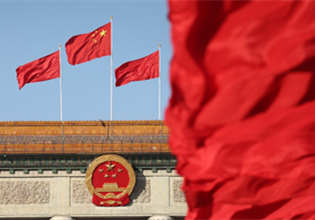High-level architectural complex from Longshan Era discovered for first time in Inner Mongolia
The research team of "Archaeology China - Settlements and Social Research in the Hetao Region" made a significant breakthrough this year by discovering a high-level architectural complex from the Longshan Era in North China's Inner Mongolia autonomous region for the first time.
The Longshan Culture existed between 2800 BC to 1800 BC, originating in East China's Shandong province and spreading to areas along the middle and lower reaches of the Yellow River. The period during which the Longshan Culture existed is called the Longshan Era.
Sun Jinsong, director of the Inner Mongolia Institute of Cultural Relics and Archaeology, introduced that the architectural complex is located on the slope of the southwest side of the ancient city of Houchengjushi in Qingshuihe county. The complex consists of five linked buildings.
These ground-level buildings face north and south, with a front and back chamber structure. The walls are made of rammed earth. The floors and walls of the buildings are smooth and even, covered with a thick layer of white lime plaster, approximately 1 centimeter wide.
During the excavation and collapse of the complex, many pottery fragments, animal bones, and a small amount of stone tools were unearthed. The pottery fragments are typical artifacts of the local Yongxingdian culture from the early Longshan Era, indicating an earlier period.
Sun believes this vital discovery confirms that Houchengju in the Hetao region was a central city site in the early Longshan Era.
It fills the gap in discovering high-level Longshan Era architecture in Inner Mongolia and even the Hetao region.
Furthermore, it provides new cultural elements for studying the development context of the stone cities in the Hetao region and the construction system of early cities in northern China.



 Print
Print Mail
Mail





